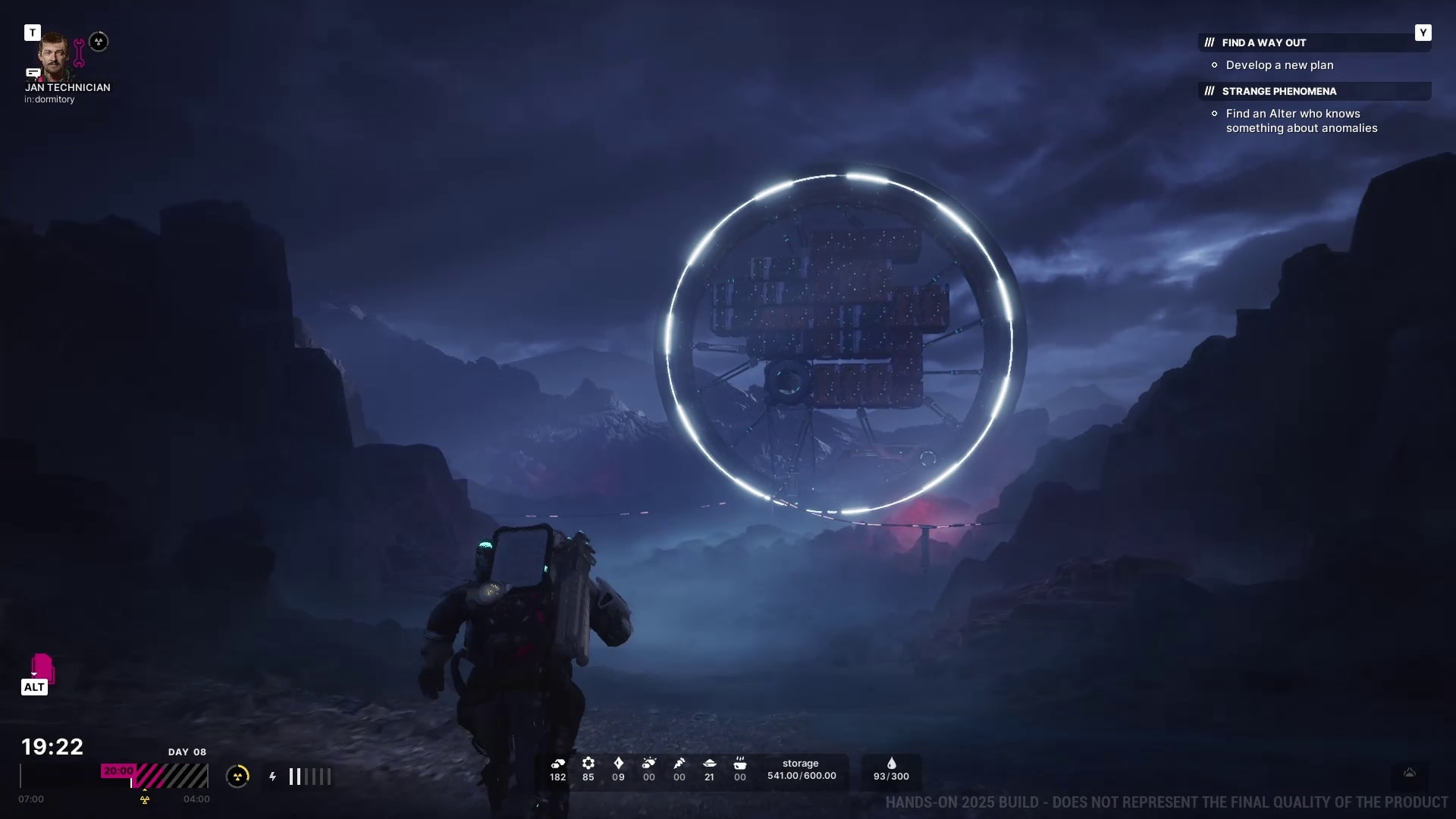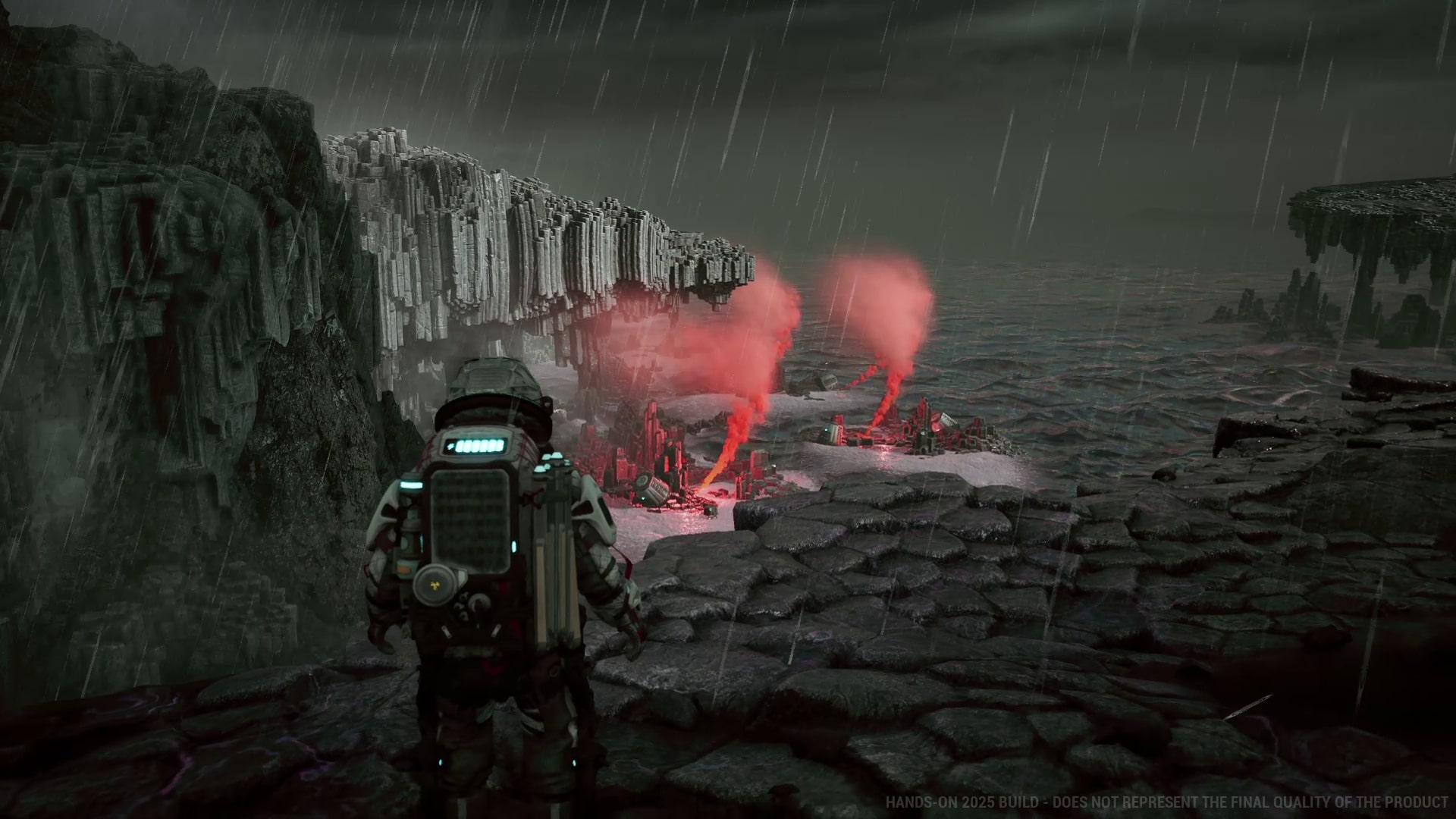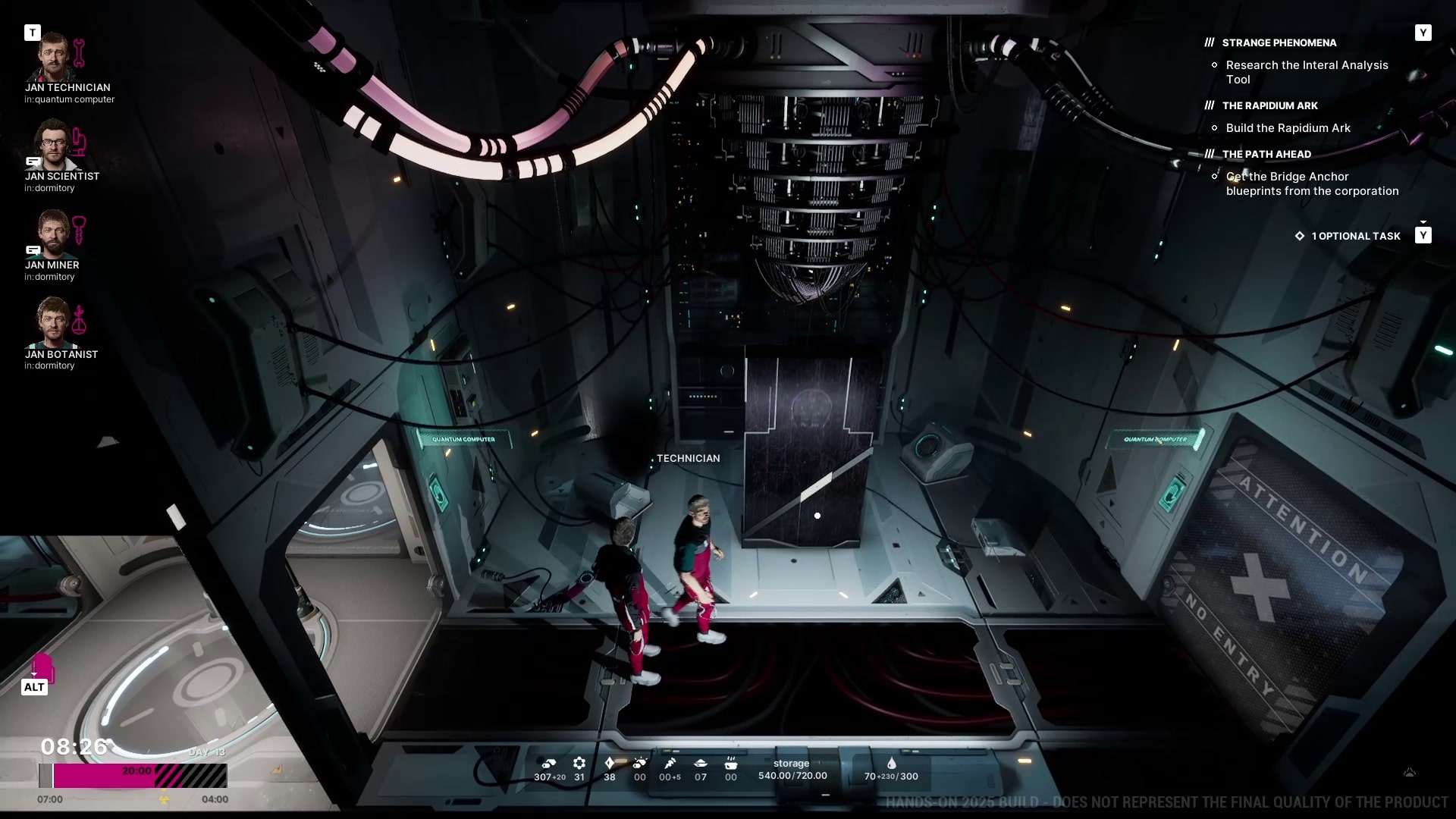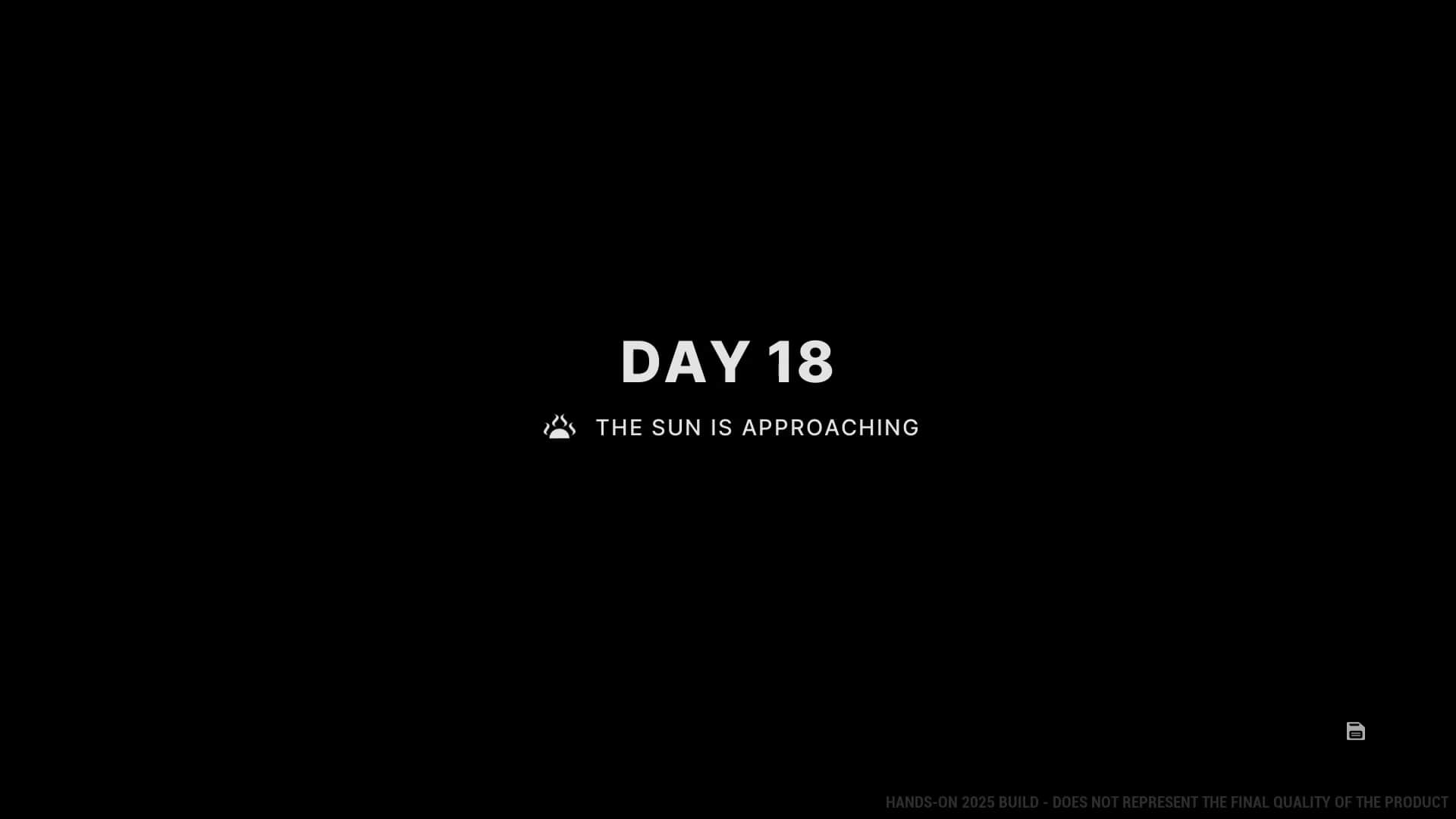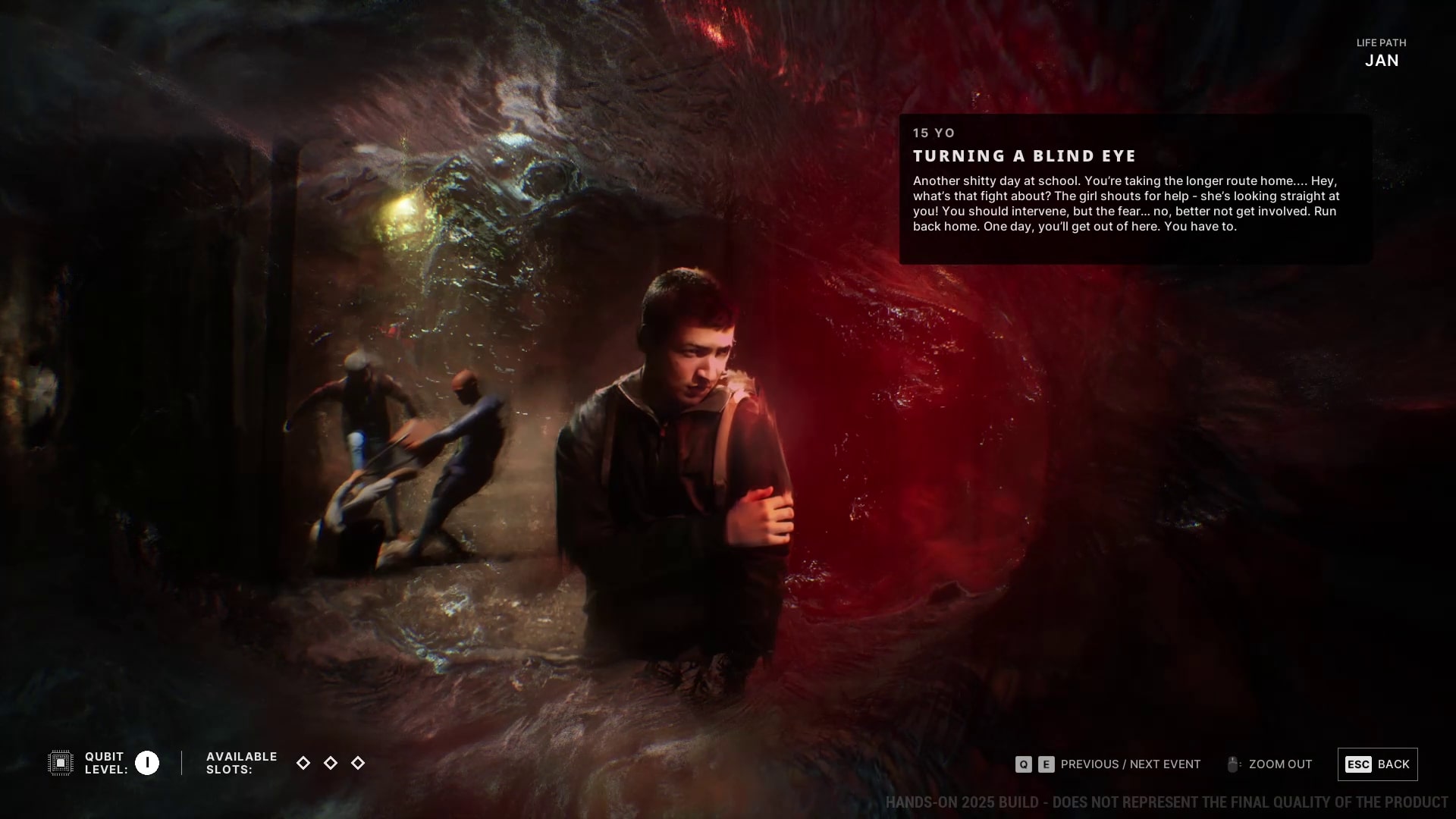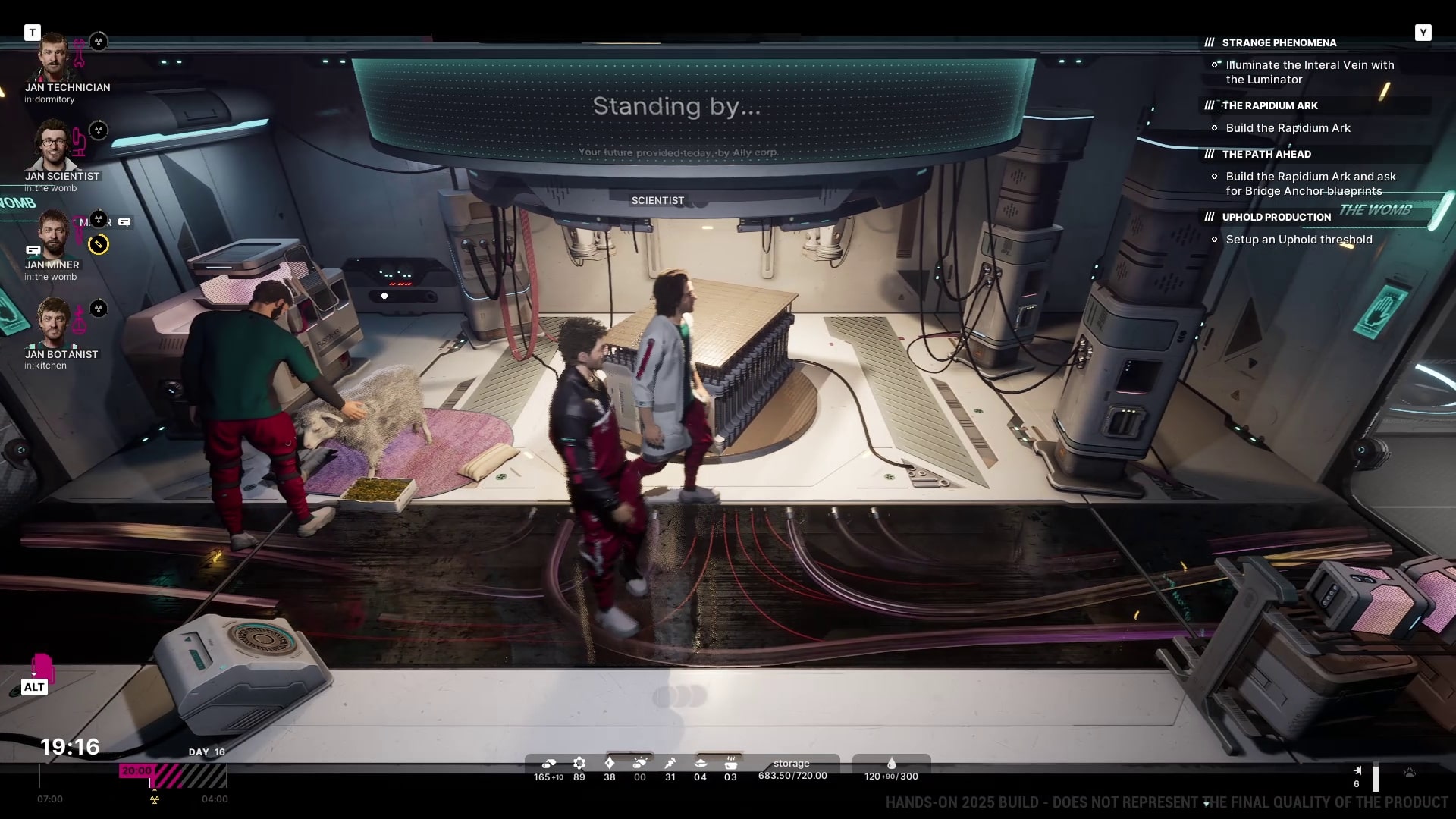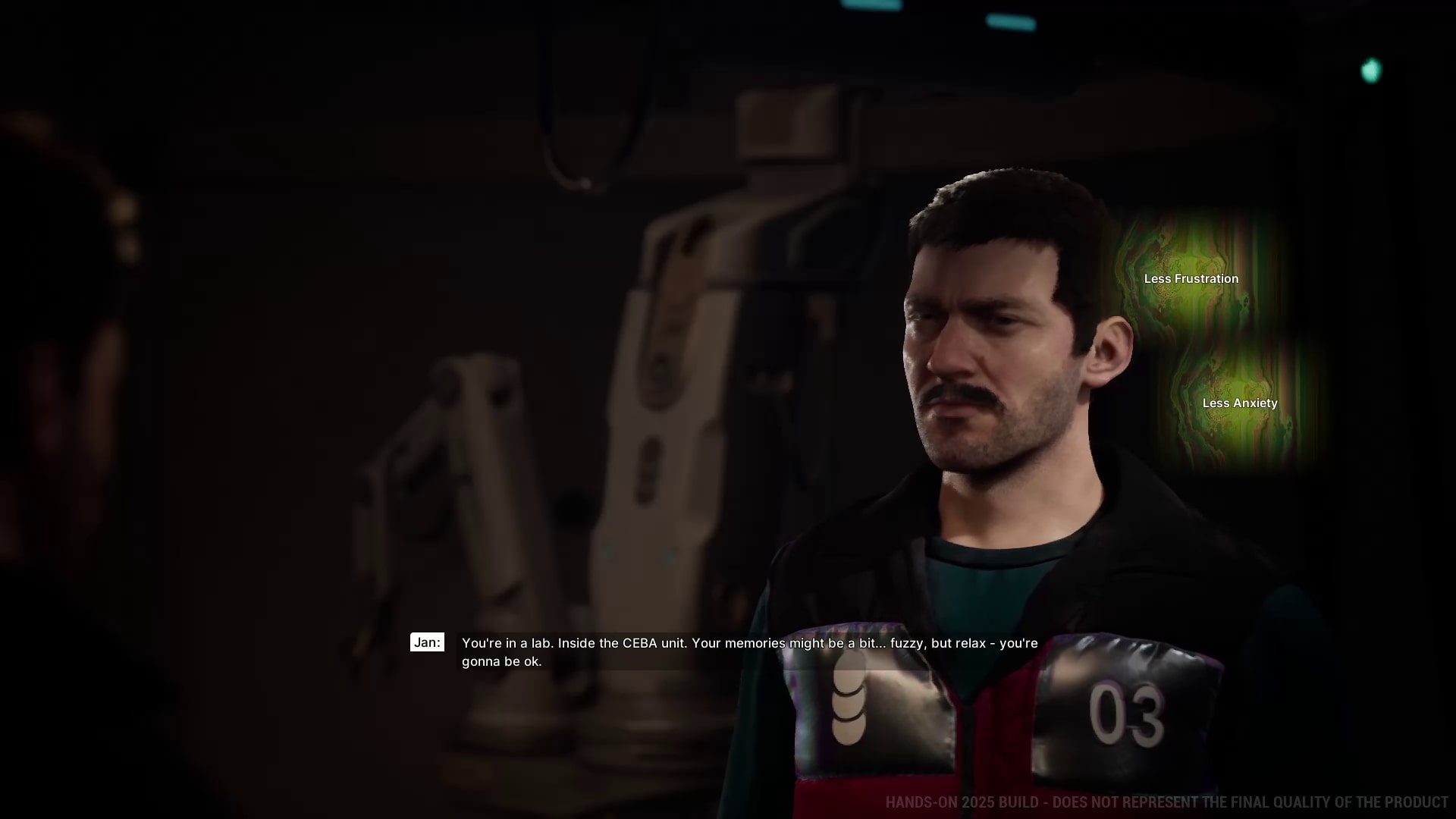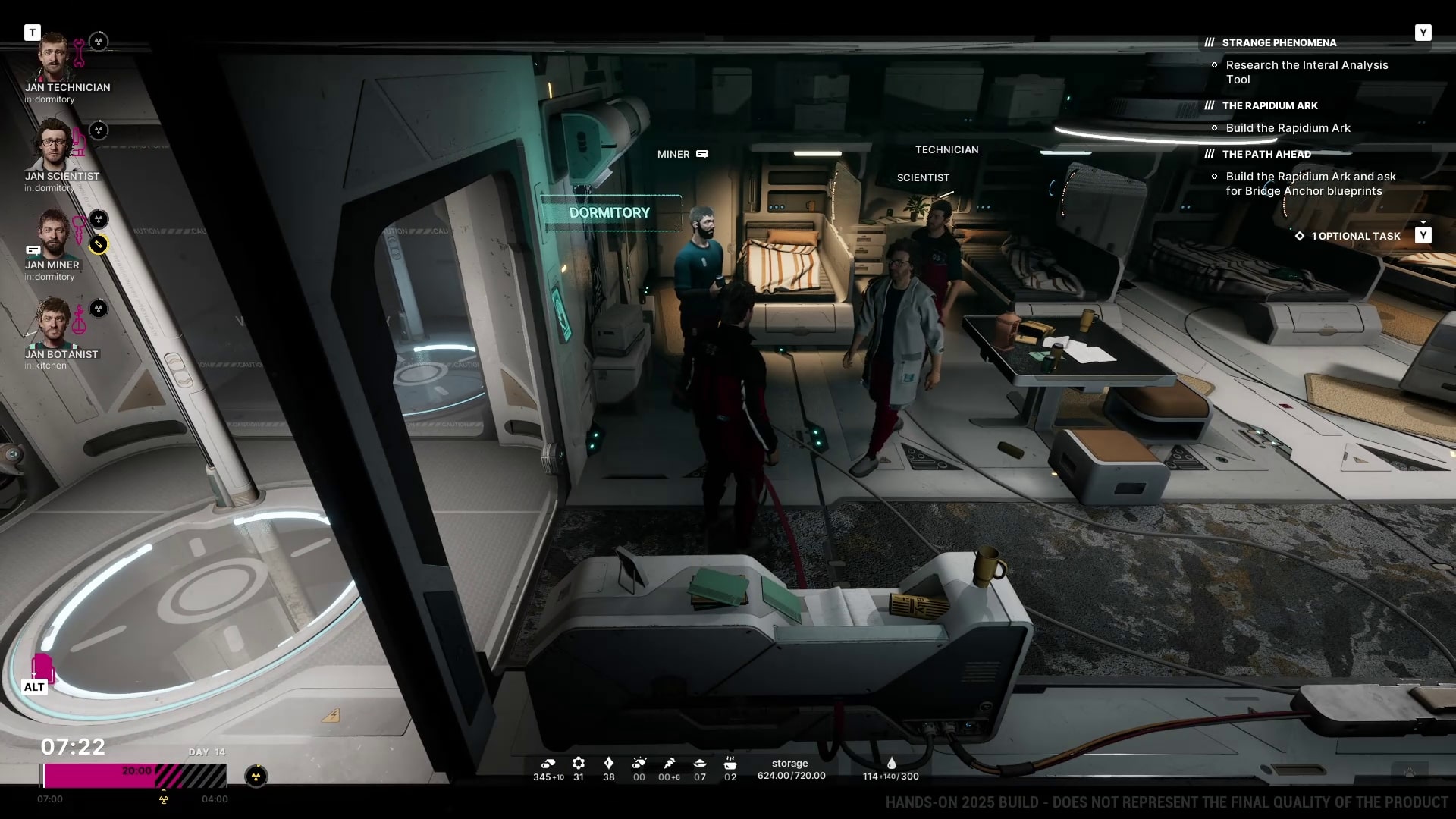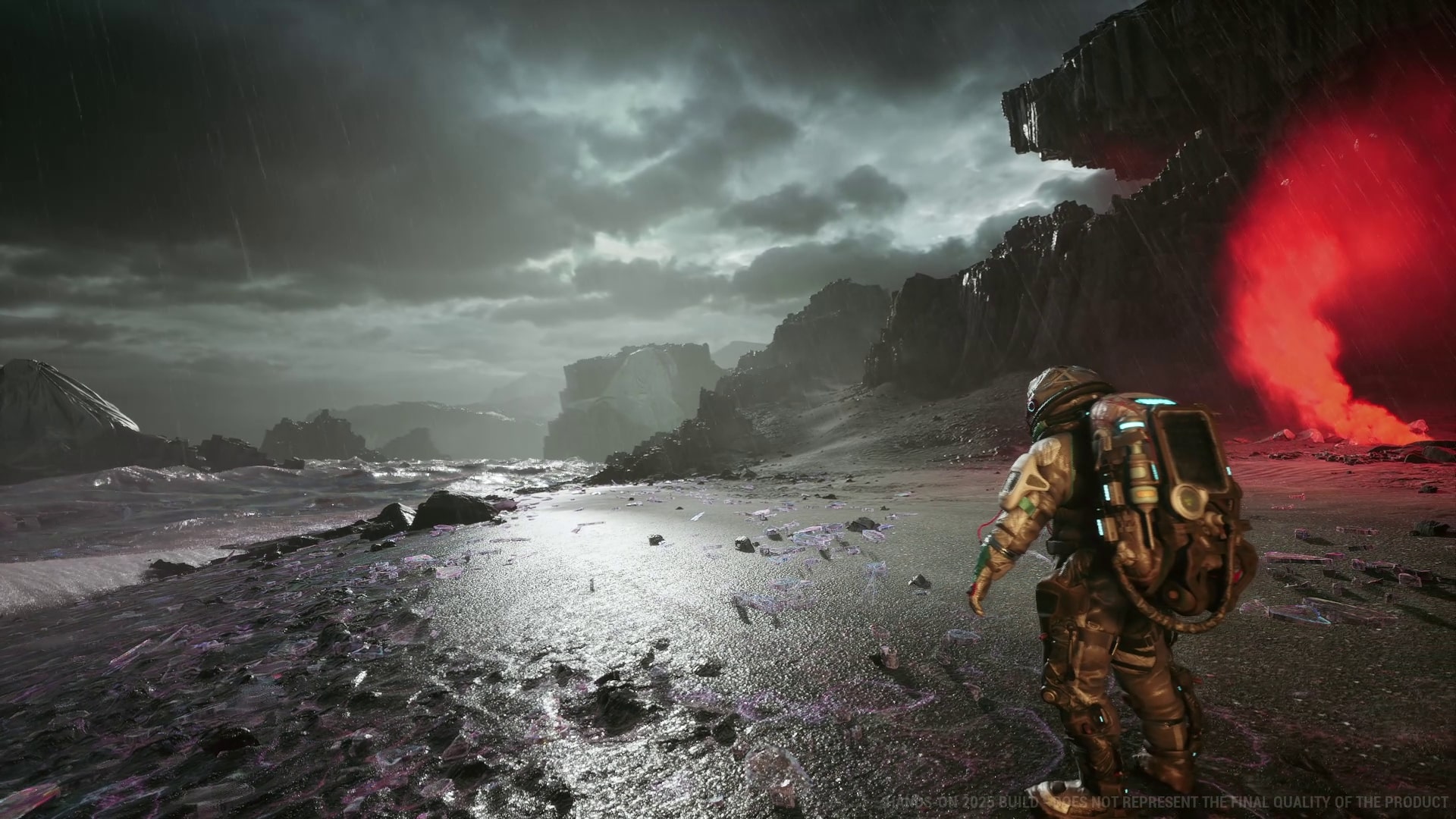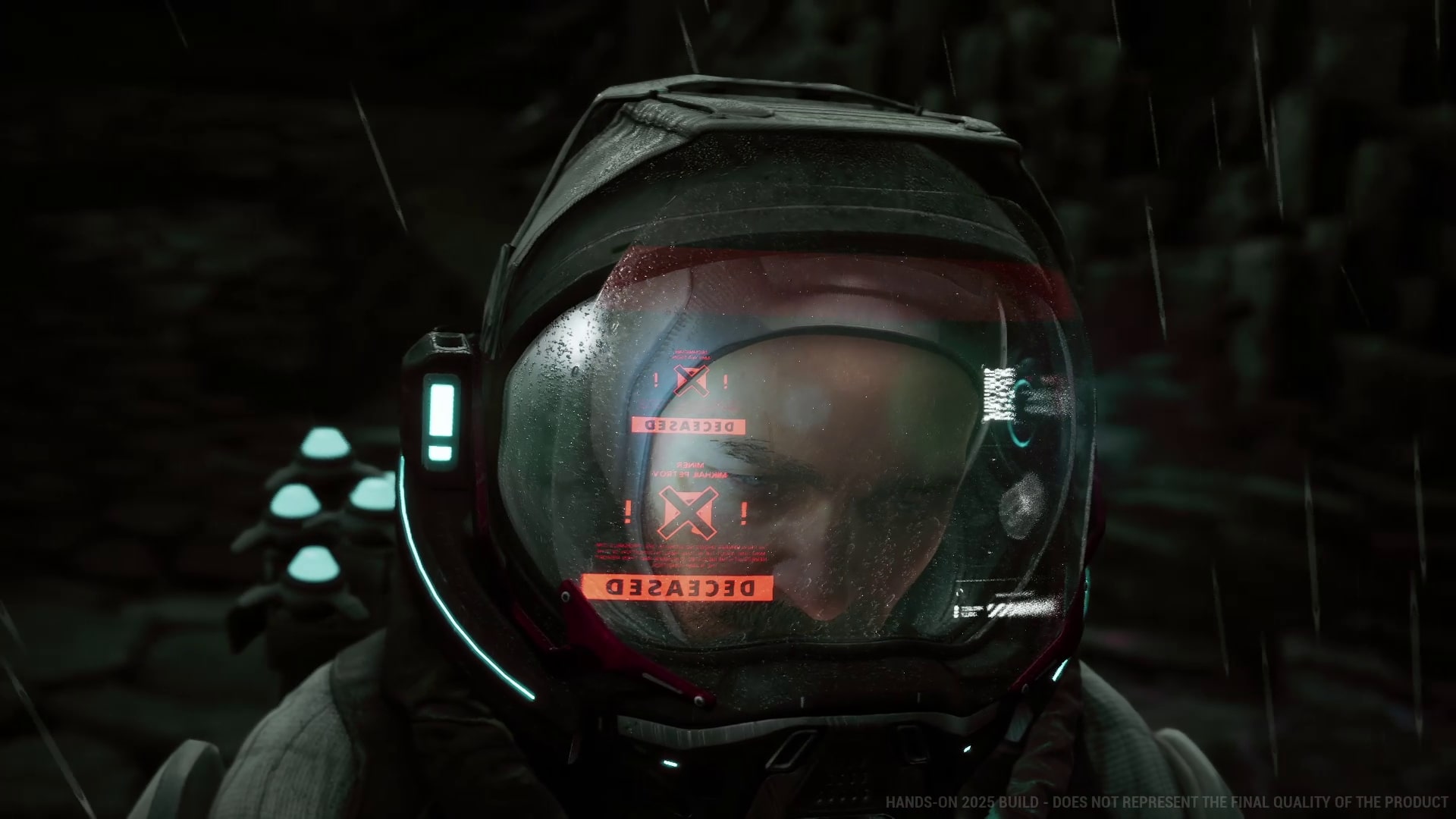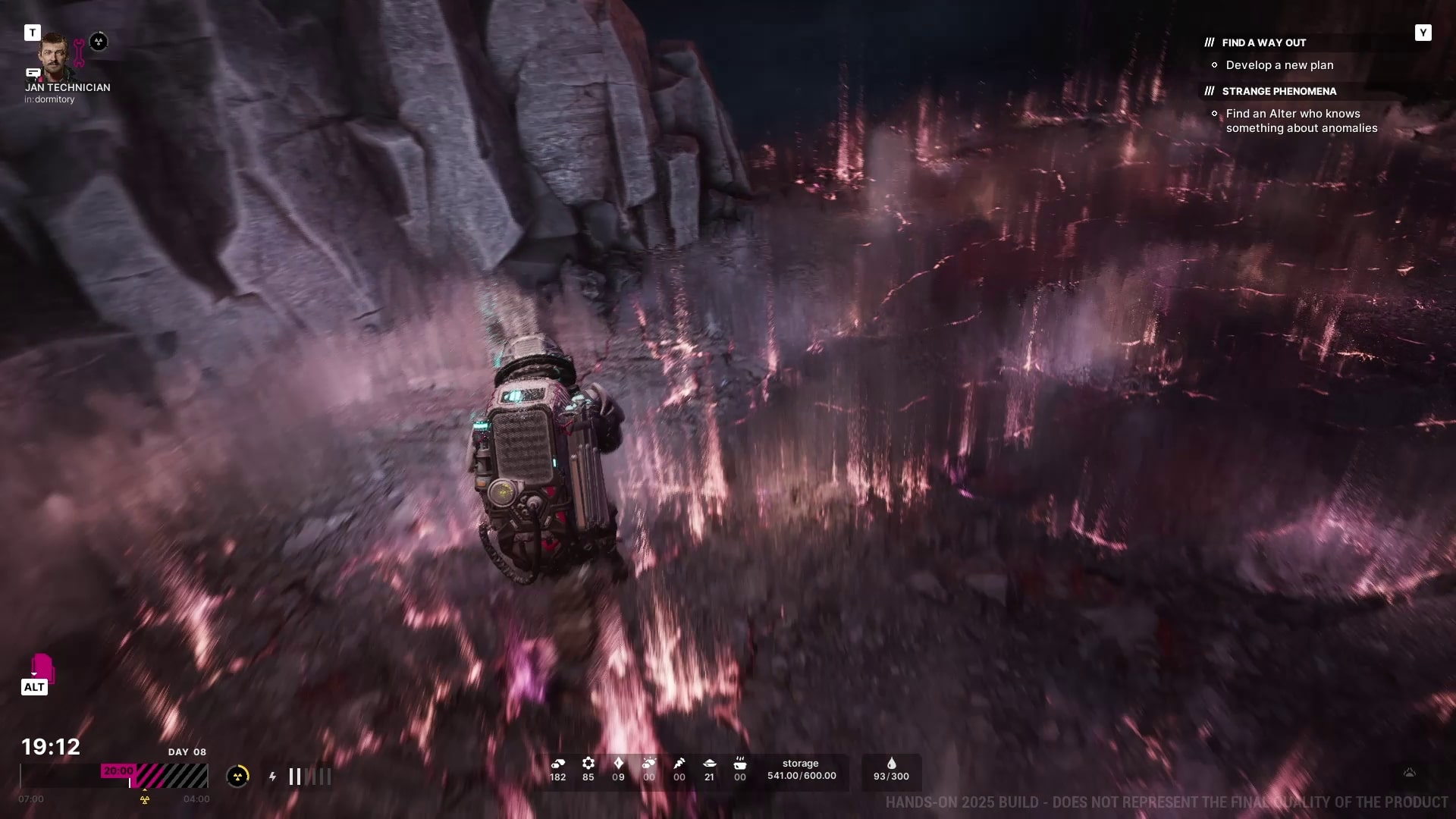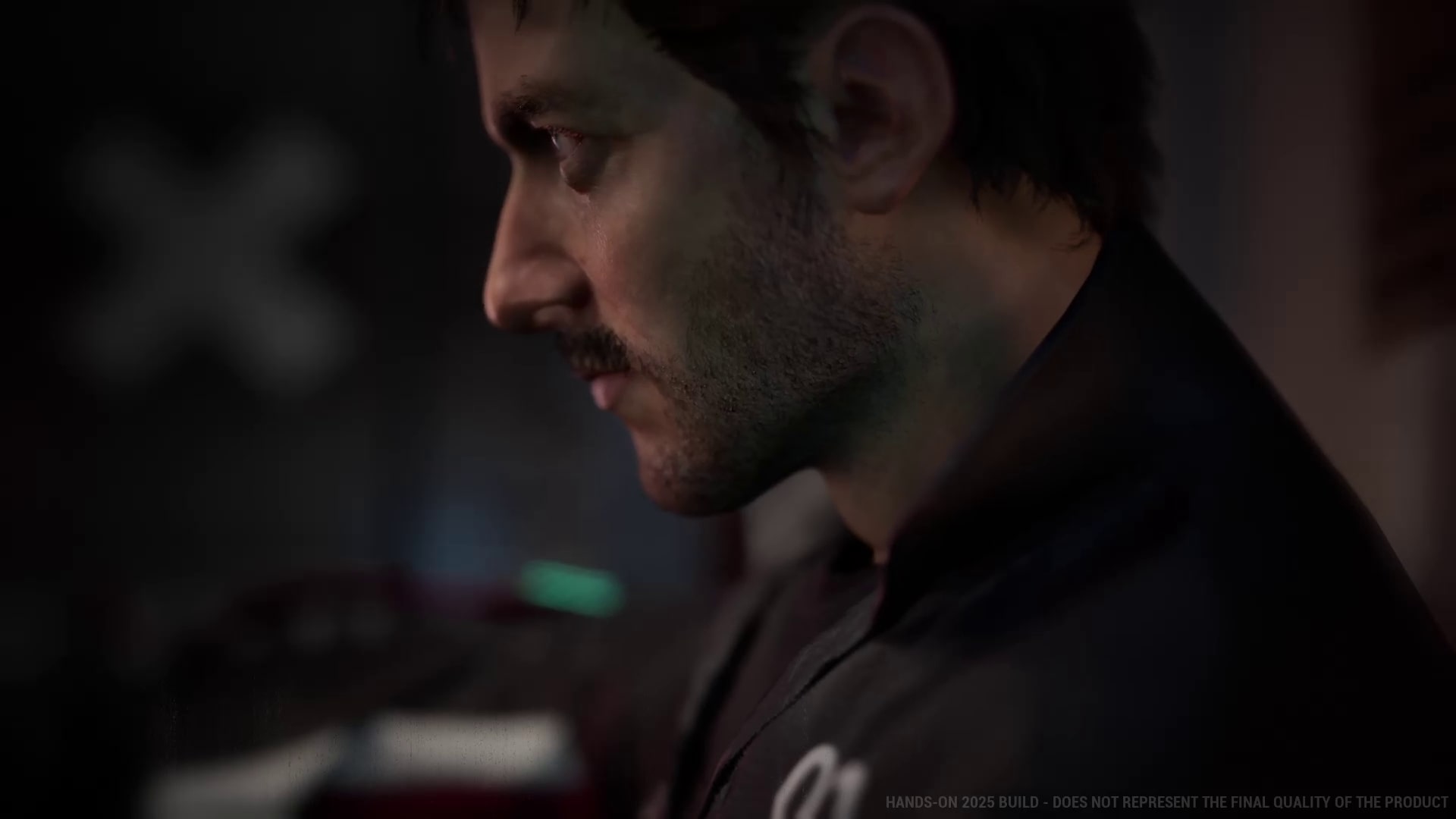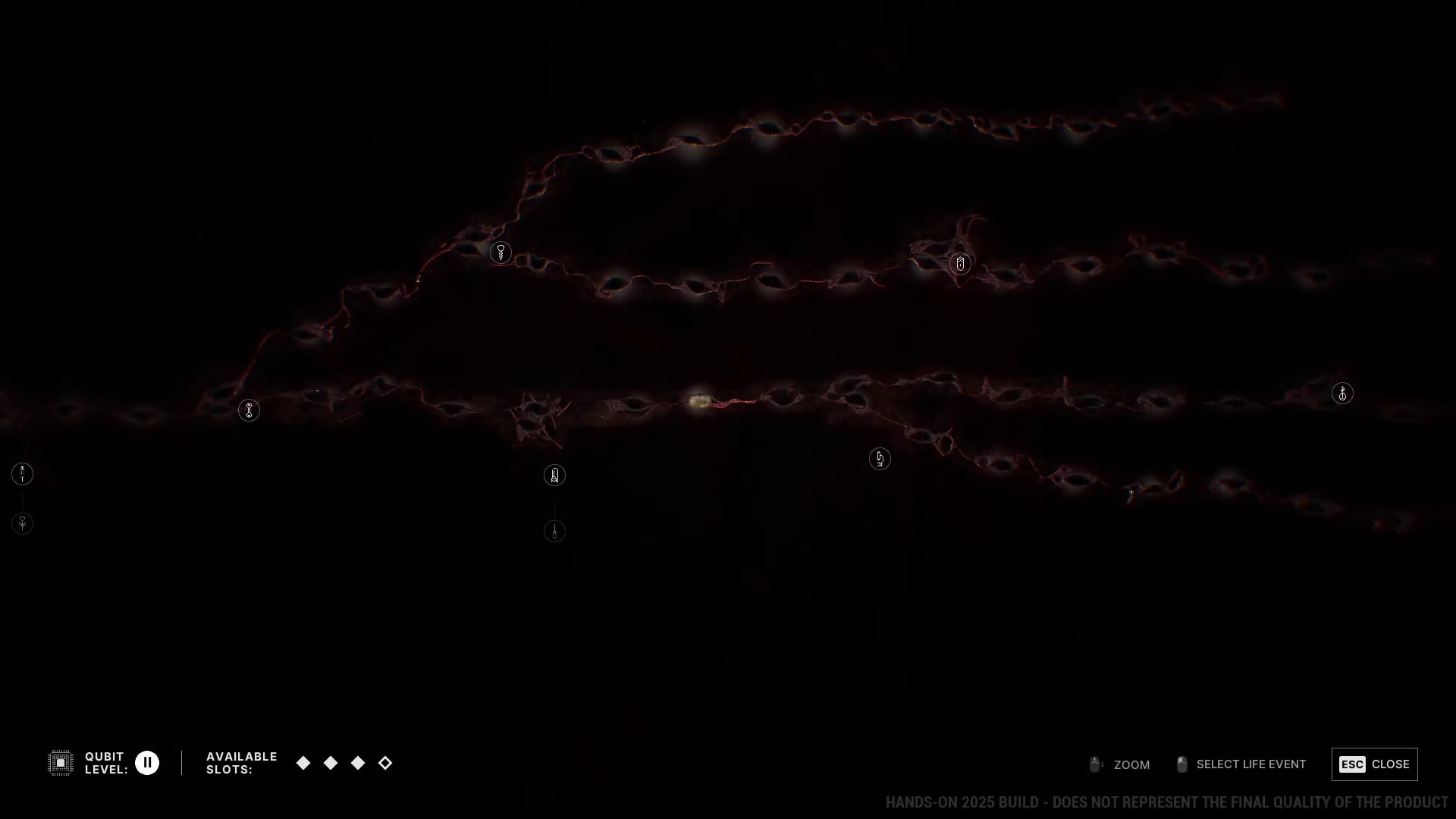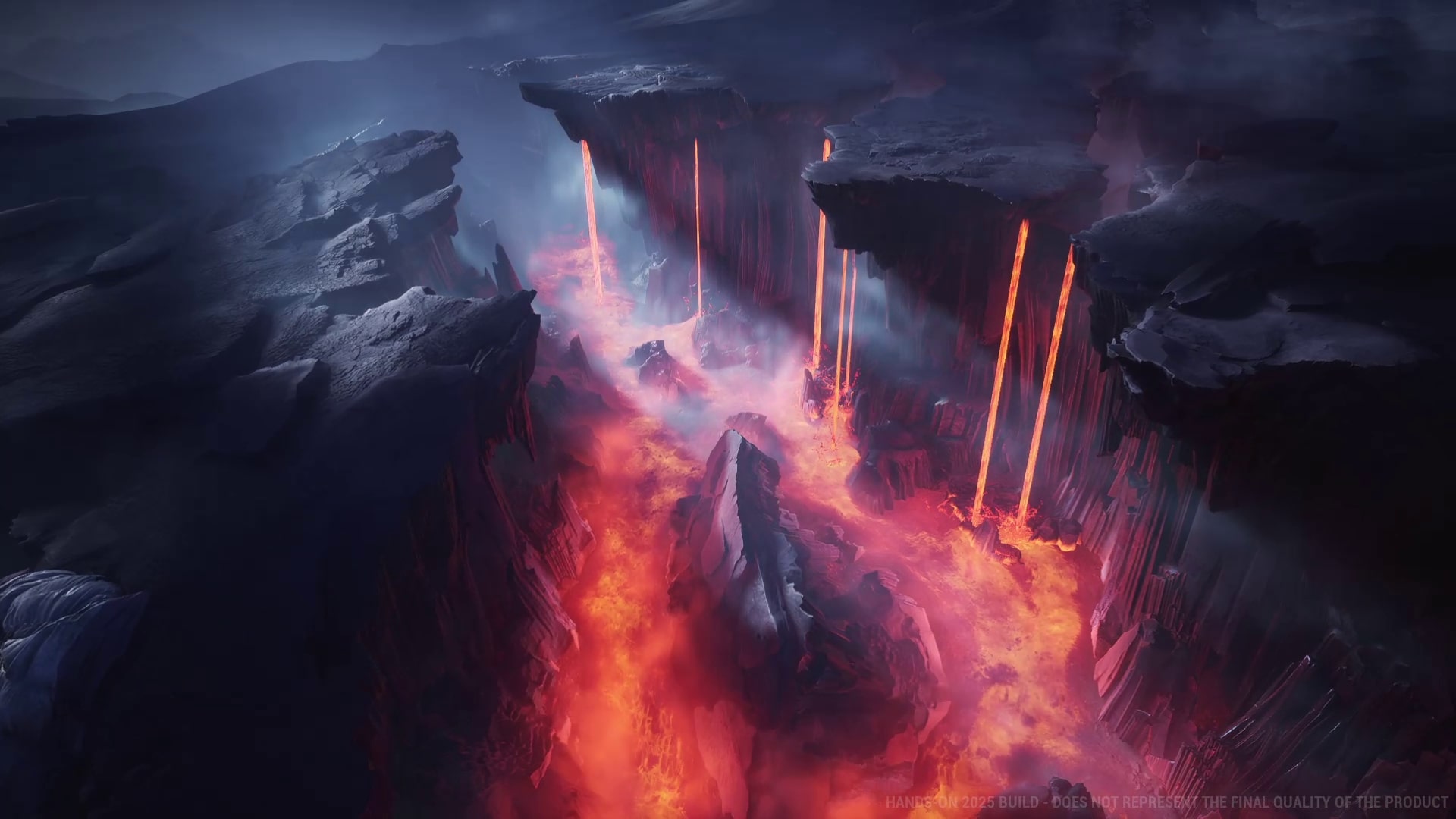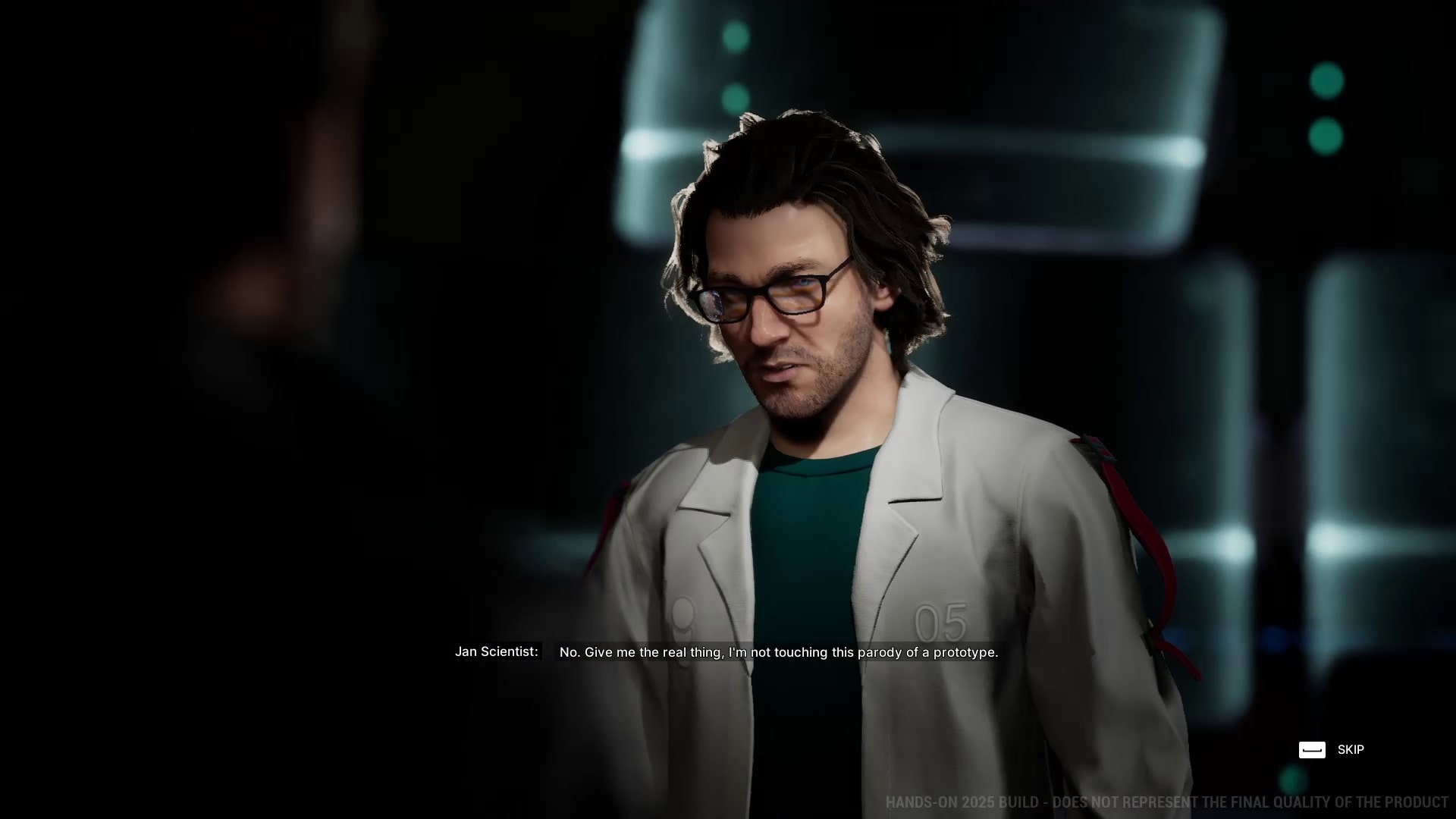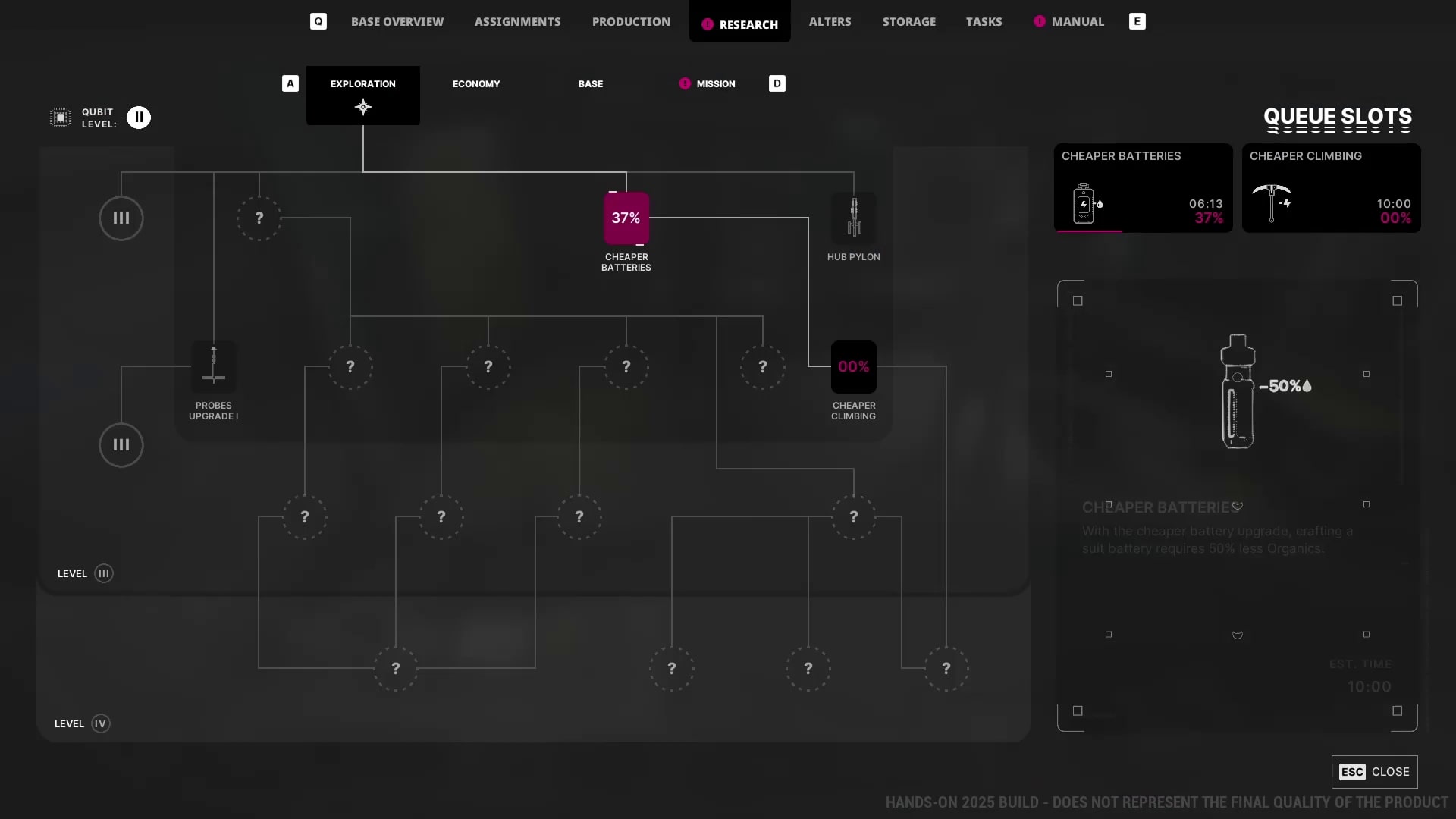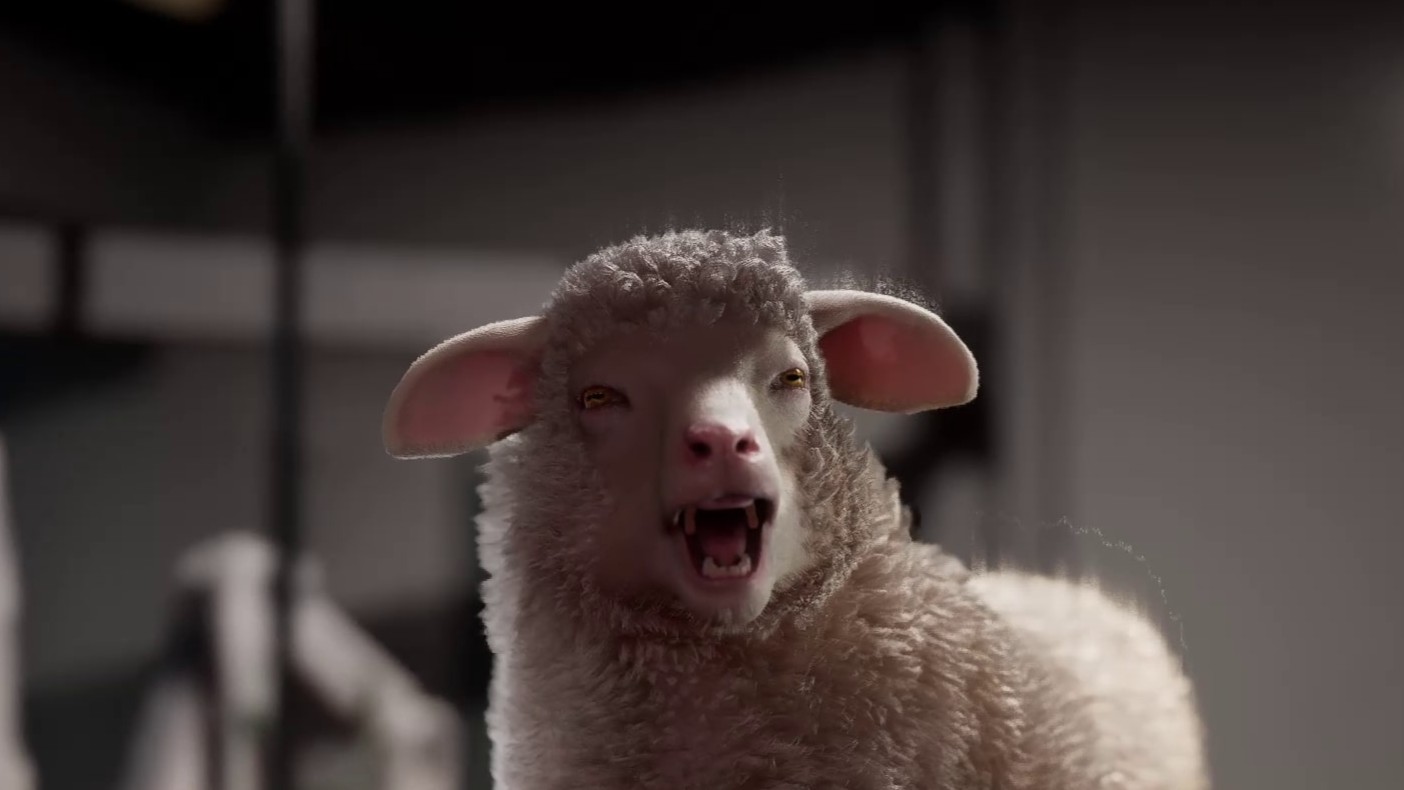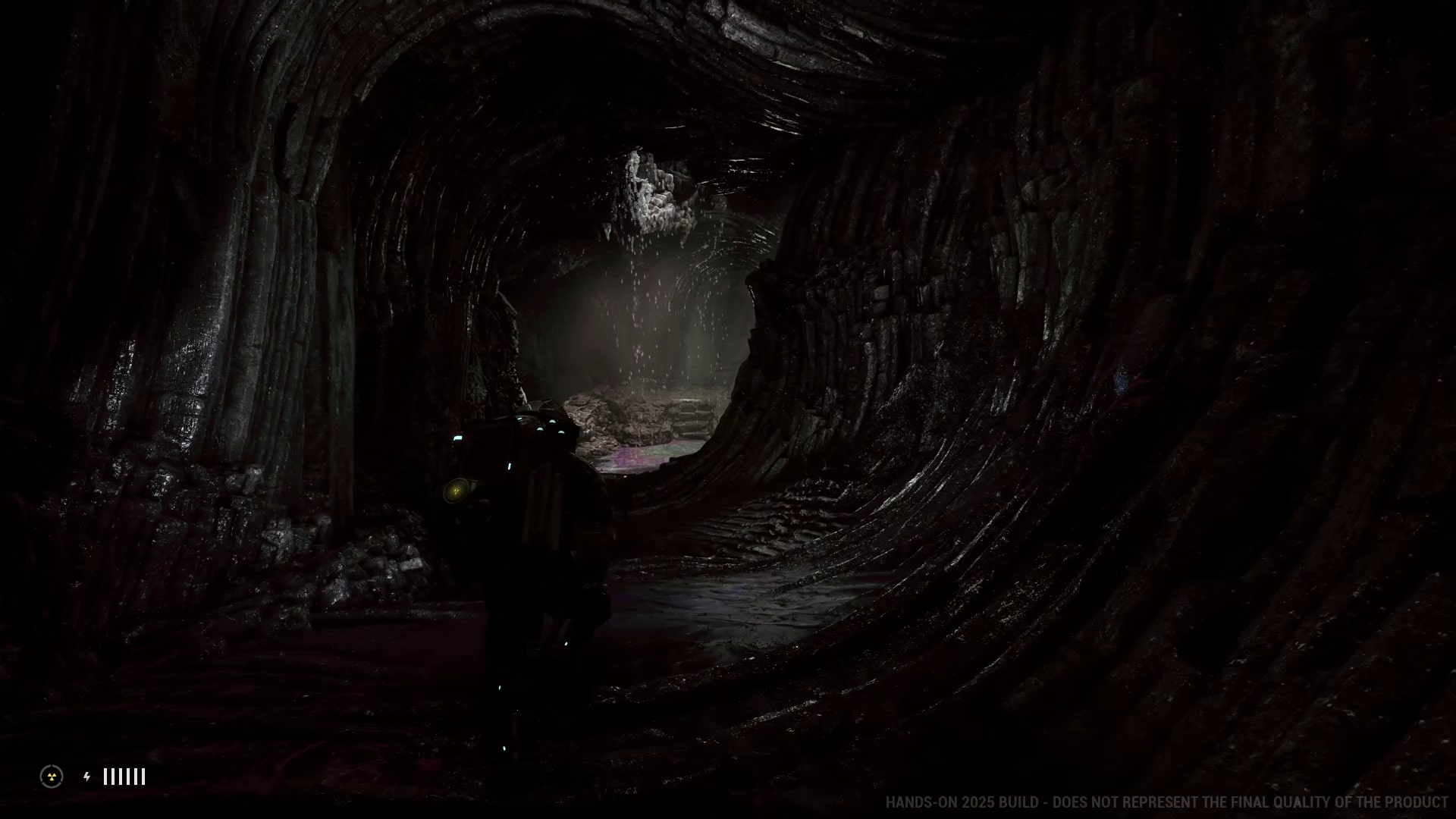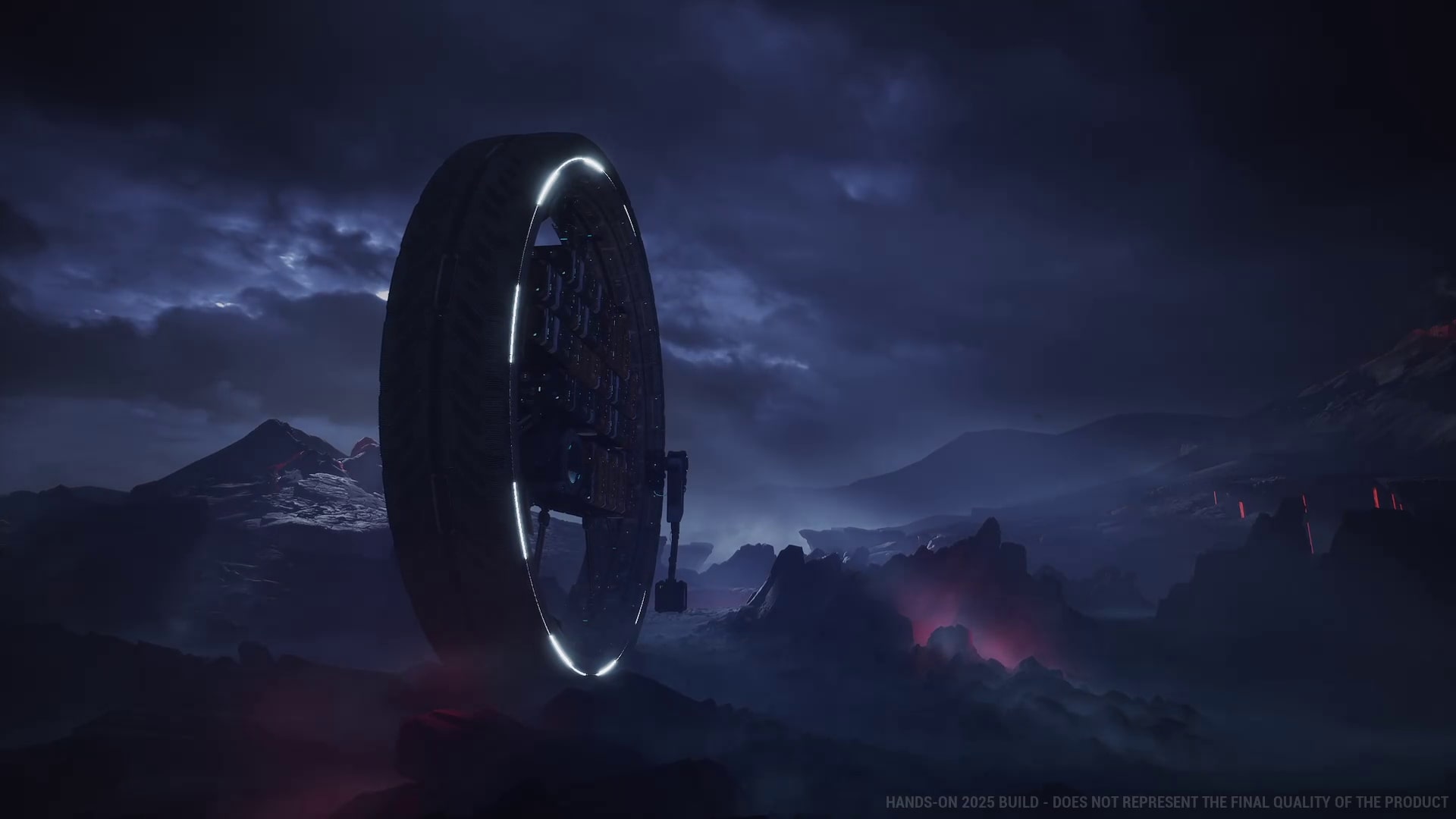The Alters is a game I’ve kept a pulse on since early last year, when our executive editor fell in love with it in Poland during the previous 11 Bit Studios event. Cautiously optimistic, while an overdone phrase, is precisely how I felt over the project.
I mean, it’s always easy to fall head over heels for a game when played in the right setting. Emotions become far more intertwined with a product during preview events—Trailers ignite players’ excitement, while immersive music and dynamic light displays create a lasting, unforgettable atmosphere.
What’s hard to reproduce is that same level of excitement once separated from the game and back home. But, as I sit here writing about my adventure of Jan Dolski experiences, a restless desire stirs within me, wanting to dive back into the world I left behind across the Atlantic Ocean.
For another playthrough, I’ll have to wait, but the love I have for this game needs to be set in writing. More people need to be ready for a title that captures the imagination while somehow maintaining a price point of $35.
In an era of over-budgeted bloat, studios finding ways to maximize their efficiency with creations such as The Alters deserve to be celebrated and cherished.
Join me as I share the many reasons why.
What exactly is The Alters?
Ever wondered what a narrative-driven survival game crossed with Fallout Shelter might feel like? Me too! The Alters’ blend of genres is a diamond amongst indie games. Its shine is so wonderful that you’ll find yourself blinded by its majesty.
In all seriousness, it’s a fantastic game from head to toe. One that has me chomping at the bit for the full release.
You’re Jan Dolski, the sole survivor of the Dolly mission in search of Rapidium. Within minutes, you’ll find yourself wholly outmatched by the surface of a planet and in desperate need of help.
You’ll come across your new home, a navigable land base that you’ll need to start and operate in order to maintain safety from the literal scorching sun. What Jan wishes could be done and what needs to be are two entirely different devices.
See, you’re on a timer. Not a playful one either. Missing this mark means the ultimate price: your life, and a Game Over screen.
The way this timer is displayed is very intentional. During the opening prologue, a sense of dread will overtake the player’s emotions as a pure countdown with a big fat number is relayed on screen at the start of each day.
Once past the prologue, I could finally take a damn breath with a huge dose of relief given the countdown displayed, “The Sun is far away.” This newfound respite allowed freedom to explore the open space surrounding my base without the feeling of dread overtaking me.
The lead director of The Alters, Tomasz Kisilewicz, said this mechanic changed over the course of development for the very same reasons.
“That’s actually one of the bigger changes we did over the course of last year. Because from the beginning to last year, the counter was always visible. From the beginning, it was like 30 days until Sunrise, and every day it was counting down.”
Tomasz went on to elaborate on the importance of this change, mimicking my own sense of how the mechanic made me feel.
“What we figured out while watching testers playing is that, because of the counter being all the time visible, they felt this urgency. They felt too much time pressure from the beginning. We designed the flow of the gameplay to have some time at the start of the act to figure out what’s going on, to explore the area, to engage in the storyline, so you don’t have to rush. But if you don’t know how much stuff you need to do and you have a set timer, it’s causing too much pressure.”
Don’t get his words wrong; survival is important. Efficiency is still key, but there is plenty of room for error. If Jan wants to survive, he’ll need to explore while maintaining a slick base. That takes time.
To accomplish this, Jan will eventually split himself into Alters. Alternative versions of himself based on branches of life choices that the real Jan Dolski failed to make. In short, their realities that never came to be, but they present themselves as if plucked from a timeline that never existed to begin with.
Jan never stood up to his abusive father, but what if he had? The confidence and alternating life path would have deviated in such a measure that Jan would have become an entirely different person, with an entirely different career path.
Whatever life decisions Jan Dolski could have made, but didn’t, will be reflected in his alter ego. Could he have been a miner, a technician, or a botanist? Perhaps his decisions could have been the deciding factor in the lives of others, and his becoming a doctor could have potentially saved the life of someone close to him.
These Alters all bring their own worth to the equation of survival. Surviving is the goal, and the Alters are the goods that will deliver you to the end. Without them, you’ll get nowhere.
These Alters can act autonomously, but will always ask for final advice on the task to complete. Do you want them growing food in the garden? Maybe you’d rather they work on tooling items or mining resources at an outpost you’ve crafted.
Whatever their objective, if it’s one they can finish, they’ll ask you for another task to work on — continuing the workflow in an effortless manner. All you really need to do is build the things for them to work with.
As I mentioned previously, outposts are used for mining and are essential to accomplishing anything. While your storage space is limited to the amount of storage you choose to commit to your base, you’ll want to shore up on all materials you can get your hands on and spend them hastily to promote the growth of your base and the health of your Alters.
You’ll need to monitor their food and mental faculties. Socializing, adoration, and empathy will all be on display to keep the minds of your Alters at bay. Needless to say, waking up to find out your entire existence is a fallacy and the memories you wield are nothing but an unlived life would drive me crazy, too.
Their side chatter is all the better, too, giving you glimpses into the world of their personal struggles as they navigate the factual reality of true existence. These conversations also raise and lower the morale of Alters, depending on the topic and with whom it is discussed.
When I asked the Senior writer of The Alters, Katarzyna Tybinka, she had this to say about the writing process for the multitude of conversational configurations players can encounter.
“Me and our other writer, Magda Gamrot , we did a lot of ping-pong discussing these scenes and fleshing them out. It was definitely fun. I mean it may seem like at times a tedious job because there’s so much of it and you know all these configurations but because of how characteristic these people are and how much fun these scenes can generate for the player. I think it was a great job.”
They certainly did, and the impact of these conversations is a driving force in the game.
Katarzyna, “And it does so much, right? It’s like sometimes I feel that the dialogues you have with the alters don’t give that much satisfaction to the player as the dialogues that you just encounter between them. It just makes it feel so natural.”
Your choice of Alter from the roster of potential companions will shape the course of your journey. It bears mentioning that not all Alters are attainable in a single playthrough; you’ll need to pick who you believe will give you the best chance of survival, or the funniest playthrough.
It’s the differences and similarities of these characters that make the experience all the more unique.
Tomasz added, “There are these archetypes that we talked about, this one’s the warrior, this one’s the lover, this one’s something. But at the same time, it was so different because they’re one person.”
“You’re differentiating them, they stand out. Each one of them, going back to that core of Jan. Why are they all the same person? What’s the thing that binds them, that makes them the same person?”
These similarities you’ll find amongst characters are what influences these connections amongst Jan’s Alters the most. Finding common ground means linking sanity to the situation at hand.
The opening of the game — My story begins
I woke to a world pulled straight from a dark science fiction novel. The surreal horror encapsulating the dire nature I’d soon find myself in alongside Jan.
I begin a walk of apprehension, one in which the uncertainty of the situation obscures the true dreadfulness of what awaits me. Jan calls out to his fellow crew, looking for other members of his expedition.
The first member I came across was unresponsive within their pod. Their body is lifeless as Jan peers into the window. We, Jan and I, continue our search.
Another is found dead, then another, until it dawns on Jan that everyone has met a similar fate. All of them were lying motionless within their pods. Dropped from space to their resting place on the planet’s surface. The crew powering the Dolly mission has been lost.
All except Jan man. Sorrow and grief overwhelm the senses, but the situation hasn’t finished playing with the life of Jan Dolski, nor will it let me sulk along with the protagonist.
An alert rings out; radiation begins to subjugate Jan’s systems. It’s time to sprint to a place I’ll call home for the foreseeable future.
Running toward the one dominating feature of the landscape, a gigantic cylindrical base, time is of the essence. In the rush, I barely notice other paths leading away from Jan on each side. A quick look at the areas I’ll be exploring once things have settled.
I dive into the base elevator, safety at last. Yet all the fleeting, as another warning is yet to come.
Jan calls home to Earth, eager to take hold of what sanity he can. A broken, mysterious voice echoes across the line. Warning me of yet more danger ahead. The Sun.
On this cursed and desolate globe, the sun cooks the planet’s surface whenever directly underneath its blaring light. Anything caught in the crossfire is equally burnt to a crisp.
Don’t worry, let Jan cook.
I love it when a plan comes together
Step one is getting this monstrous base up and running. As it stands, that’s all it does: stand. No movement can be made as the engines fail to fire over and over. Nothing I try works. Instead, I go out and search the planet’s surface for clues or items to help me.
While snippets of minerals, metal, and organic materials cross my path, it’s the ominous, distorting glow of Rapidium that draws me in. Like an overwhelming lens flare shot directed by J.J. Abrams, the Rapidium looks to mirror the effects of the cover art for Star Trek V: The Final Frontier.
A combination of decades-old science fiction and modern flair, Rapidium is the only thing that will allow the progression of this mission, and more importantly, will keep me alive. Mission or not, getting this base moving is the one and only thing that matters at the moment.
Calling back to Earth, the same voice picks up once more, leading me to use the Rapidium on locally stored DNA via a massive quantum computer.
The instrument is used in conjunction with a building I’ve created earlier in the game, named “The Womb”. Through this facet, I produce a snippet of life in the cutest possible form. Molly, the sheep! The Rapidium works! It can create life! Wait, this stuff creates life?
Again, I call home to gloat about my success. Earth, or the voice on the other line, is equally pleased with the results as I am, but more help is necessary.
You find the company that sent you on the mission has recorded your recollections into what they call a memory scan—your entire life, from beginning to present, and all the pivotal choices that have led to the current moment. It’s here that we take yet another step further into the realm of quantum mechanics.
Through this memory scan, your first Alter is to be created. One that will define the rest of your journey as the first human companion born of this tech, the rightfully named Technician.
This Alter exists because of one decision. When he made the choice to stand against Jan’s father, he couldn’t take the abuse his mother and he withstood every day at the hands of such a monster. Standing up to him meant a resounding confidence that carried Jan into an entirely different career path.
Our Jan chose to run rather than fight. Instead of telling the father off, he went to college, where he found himself free of that life altogether. A guilt that holds him to the present day.
While the Technician also made mistakes in his timeline, those weren’t the original Jan’s mistakes. From that point forward, these two men became entirely different persons. The Technician even has his own set of potential branching Alters that players can discover in the game.
This first chat with the Technician is incredibly difficult given how different these two men are, but the urgency of the situation launches both into action. With the help of the Technician, you’re off and away, putting a safe distance between Jan and the deadly horizon behind him.
On the opening base journey, Jan will need to come to terms with the existence of Jan, or the lack thereof. It’s a minigame all in its own, as every conversation from this point forward will be.
Finding shared ground amongst each other strikes a bond, setting the relationship between the two on a positive path. Failing to do so will set the Technician and other Jans, when attained, into a vortex of negative emotions, potentially leading to catastrophic consequences.
Coming to a stop and realizing there are more difficulties ahead bonds them once more. A necessary evil is needed, the help of other Alters. This brings a certain amount of acceptance between the two, and just like that, the main loop of the game is introduced.
Bridge the Gap
The Jan duo quickly discovers that the once safe path has come to a blistering stop. Before them is a vast open space of molten lava. With no way around, and the need for a far more scientific mind becoming necessary, Jan will create his more direct self, the Scientist.
This chap is anything but friendly, but his motives are easily understood. His only goals are scientific understanding, the drive to further the world of science, and to better his own accomplishments.
This is the Alter that really starts unraveling the whole quantum angle and the spaghetti code of timelines Jan is now wading through. Without getting into too much detail, as I want you to discover these twists for yourself, it’s pure mind-fuckery that Jan is now dealing with.
What has been, what could have been, and what will become are similar yet entirely different. The wonders of Jan, Jan, Jan, and Jan begin to unfold in ways that open an unclosable can of worms.
From here, the gameplay also becomes far more refined. You’ll also discover anomalies that, over time, become difficult to deal with, to the point that you’ll need to find ways of destroying them before they do the same to you.
You’ll unlock the ability to research specific items like better storage, a larger base, better tooling, and even a recreational center.
From what I gathered, researching everything seems to be a somewhat impossible task; what it’s meant for is to complement the play of the Alters you’ve chosen. You’ll find yourself strategically strengthening the areas of weakness that your Alters can’t cover.
Maybe you chose the Doctor instead of a Botanist. The ability to grow food becomes all the more difficult as the Botanist is able to garden with greater efficiency, but a certain researched ability will allow for gardens to be harvested with greater speed, making up the difference.
As the game progresses, these mechanics begin to make more sense. Again, I won’t spoil anything for potential players, but the gameplay behind this feels extremely well-thought-out. The depth allows for freedom of choice when picking your Alters, granting players the ability to mask any shortcomings because of who they didn’t choose to bring to life.
The Alters so far
When it came to choosing my Alters, I had the privilege of seeing quite a few. These included, but were not limited to, the Technician, Miner, Botanist, and Doctor.
The Doctor and his journey hit close to home. While I didn’t bring this up at the 11 Bit event, my father is currently going through the gauntlet of medical diagnosis. In a time of celebration of artistry, it never feels like the right time to trauma dump on such a festive event.
Day in and day out, I watch as one doctor after another attempts to better understand the condition that is causing his progressive deterioration. Test after test fails to analyze the underlying issue, while medication endeavors to bandage the otherwise unhealed.
The heartbreak of watching a loved one struggle is one we all share. At whatever degree we face it, every one of us will go through this turmoil at some point or another. As for some, this agitation of the soul will be repeated a multitude of times across a number of loved ones.
The Doctor, for me, begged the question: What if? Had I made the right choices in my life? Had I made different choices in my early days, could I have been the one attempting to save my father?
The Doctor’s story, without going into lavish detail, broadly reflected my own in ways I wasn’t ready for. Then again, no one is ever truly ready to look in the mirror and find what looks back.
These days, it’s rare that a game will leave you pondering the paths not taken. Rarer still is a game that wields this while succinctly finding ways to connect your world to that of a video game. The Alters achieves both.
More extraordinary, it stirs a quiet wonder about my own life—how the smallest of decisions might have created different outcomes in my story. What novels could I have written had the pen been a different color of ink?
I’ve never been one to replay games, but The Alters has me eager to dive back in, excitedly tapping alternative options for better or worse in a drive to find the answer, not just in the game, but in myself.
The Alters releases June 13 on Xbox Series X|S, Windows PC, and PlayStation 5. It will be available on Xbox Game Pass and PC Game Pass.


